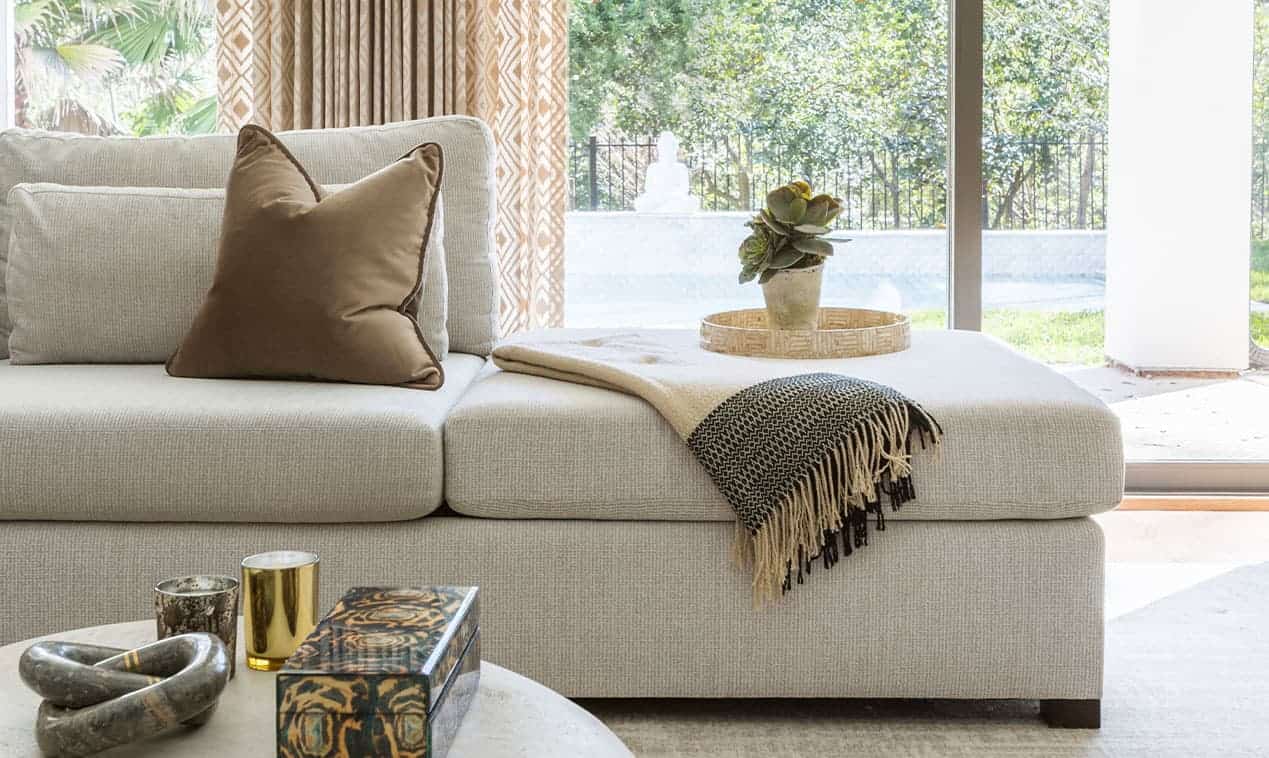In the fashion world, there are several widely accepted rules: “don’t wear white after Labor Day” and “don’t mix brown and black accessories” have been advised for years. But how unexpected and undeniably striking it is to see a fashionable woman with bright white culottes, black boots, and a handsome leather bag strolling down the street in mid-November. Some rules are best when broken!
As designers, we understand that certain guidelines are essential (consider the appropriate scale of a rug, for example) and others have some wiggle room. In designing interiors, boldly breaking the design “rules” can have a stunning effect. Today, we are sharing our favorite design rules to break.
Design Rule #1: Only use dressers in bedrooms
Some people believe dressers are only to be used in bedrooms. But our designers love to use dressers and chests of drawers all around the house – after all, they add extra storage. And it is so important to think about the functionality of your furnishings. Too many trendy or just-for-looks pieces, as fabulous as they may be, can make a room seem cluttered or too precious to be lived in. As you can see in the photo below, we chose two white chests to sit on either side of this monumental fireplace. They add a sense of heft, comfort and practicality to the space. For families with young children, this added storage is much appreciated and still, very stylish!
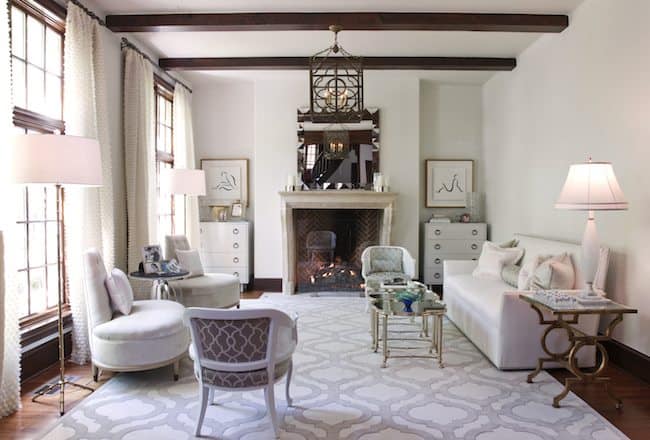
Design Rule #2: Everything must match
One of the biggest rules worth breaking is the misconception that everything must match within a space. I believe style contrast is what makes an interior design rich and unique – think of it as our individual signature. Collecting different furnishings and art from different periods gives a space character, as opposed to looking like a showroom. In the living space below we paired a plush salmon sofa, fashion-forward art and clear acrylic side tables with a stunning large-scale teak root cocktail table on top of an animal print rug with bird base lamps. The black and white contrast grounds these diverse elements. Whew – that may seem like A LOT but it creates the perfect masculine and feminine mix for a one-of-a-kind design.
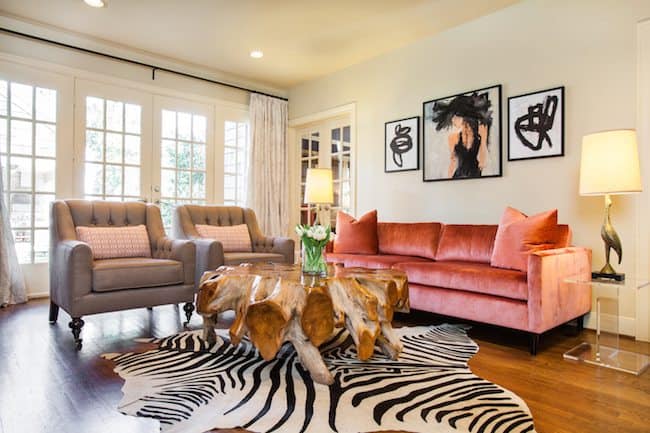
Design Rule #3: Don’t mix metals
Over the years my love for mixing metals has grown more and more. Some people believe if there is a silver light fixture or a gold faucet then the rest of the metals throughout the room should be the same. I am thrilled to report that’s just not the case. In the photo below, I am willing to bet you didn’t immediately notice the use of different metals within the light fixtures, console tables, and cowhide ottomans. One trick is to incorporate accent items that help tie the metals together. For instance, this large scale area rug complements our mix with soft shades of cooler blue and gray, creating one cohesive design with mixed metals.
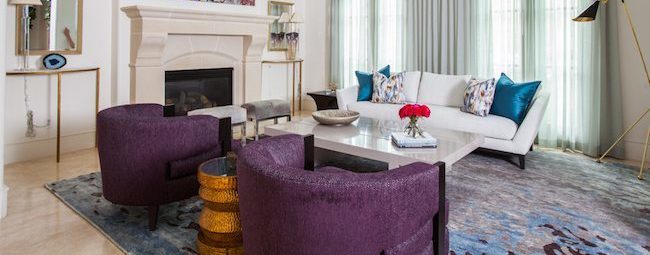
Design Rule #4: Arrange all furniture around the fireplace
This may seem like a random rule to break, but I find myself breaking it often these days. I am not saying I completely ignore fireplaces, because they are beautiful, literally add warmth to a room, and can be important architectural features. But if treated as decorative pieces rather than focal points of a design, a wonderful richly layered effect can be achieved. Check this out in the photo below.
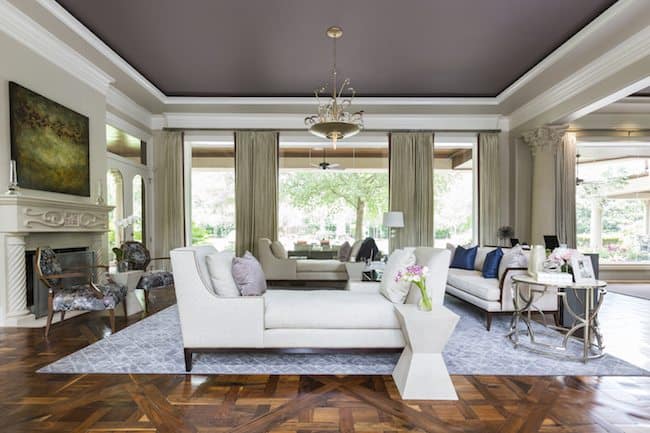
Design Rule #5: Small spaces require teeny tiny furniture
Although I believe it’s good to keep room scale and proportions in mind when creating a design, I don’t think they need to completely dictate it. When you fill a small space with ONLY small furniture it can make the room feel even smaller. Generously scaled furniture in a small space has the potential of creating cozy, expansive effects on a room. Try playing around with scale by adding in a few full-sized pieces instead of filling the space with an assortment of smaller furniture. In the image below, we took a third-floor space with lower ceilings (because of the roof line above) and made it a fantastic space for a teenage girl. Notice the nightstand on the left overlaps a door to attic space. We don’t need that door every day so we centered the bed on the wall and covered it up. Voila!
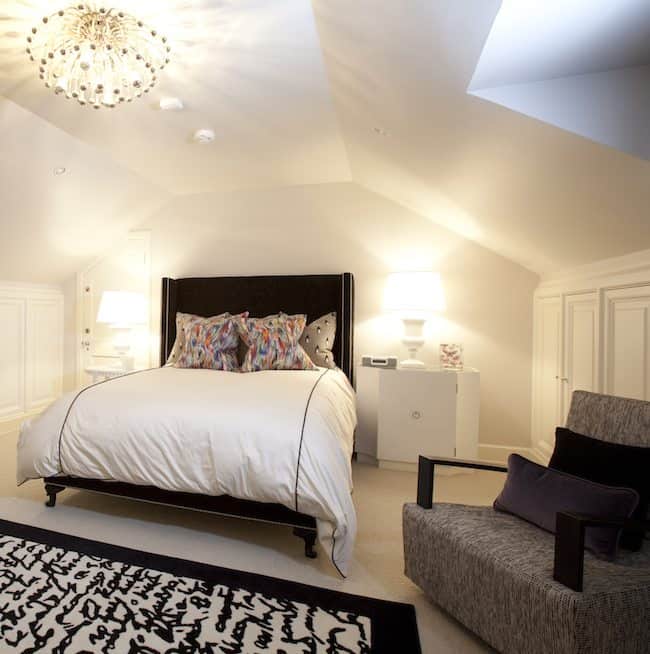
There is no interior designer “rule book” that has to be followed to the letter. This is an art! Keeping industry standard practice in mind is the right thing to do when starting out but, in the end, rules are meant to be broken. Remember, the name of the game is to trust your own eye. Focus on that and you will always create beautiful, personalized, and remarkable spaces. For more design inspiration follow us on Pinterest and Instagram!


